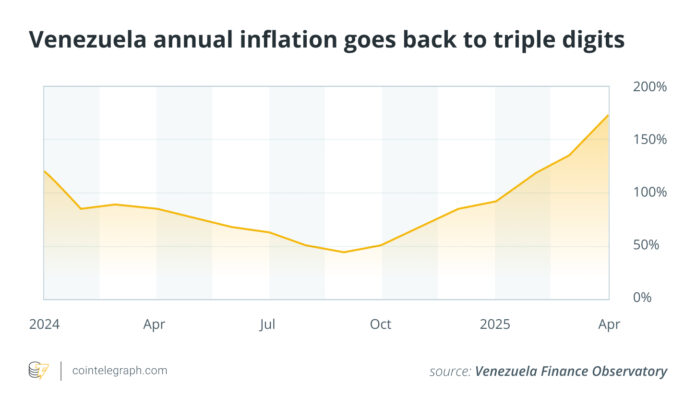Introduction to Venezuela’s Economic Landscape
Venezuela, a country plagued by hyperinflation, has seen its economy undergo significant changes in recent years. With an annual inflation rate of around 229% as of May 2025, the country’s currency, the Venezuelan Bolívar, has become increasingly unstable. As a result, the daily prices in Venezuela are often determined by the USDT (Tether) rate, also known as “Binance dollars,” which serves as a more stable alternative to the Bolívar.
The Rise of “Binance Dollars”
The term “Binance dollars” refers to the USDT rate used in peer-to-peer (P2P) markets, particularly on the Binance platform. This rate has become the de facto standard for determining prices in Venezuela, with many businesses and individuals using it as a reference point for their daily transactions. The use of USDT has become widespread, especially for small transfers, due to its stability and ease of use.
How USDT Replaced Cash in Venezuela
The adoption of USDT in Venezuela can be attributed to several factors. Firstly, the country’s hyperinflation has made the Bolívar increasingly unreliable, with prices changing rapidly. Secondly, the scarcity of physical US dollars has made it difficult for individuals and businesses to access cash. Finally, the ease of use and stability of USDT have made it an attractive alternative to traditional currency.
The Impact of USDT on Venezuela’s Economy
The use of USDT has had a significant impact on Venezuela’s economy. With many businesses and individuals using USDT for their daily transactions, the country has effectively dollarized its economy. This has helped to stabilize prices and reduce the impact of hyperinflation. However, it has also raised concerns about the country’s dependence on a foreign currency and the potential risks associated with its use.
Who Uses USDT and for What
USDT is widely used in Venezuela, with households, small and medium-sized businesses, and even some larger companies using it for their daily transactions. It is commonly used for food, rent, and other essential expenses, as well as for imports and exports. The use of USDT has also helped to facilitate cross-border transactions, making it easier for individuals and businesses to send and receive money.
Challenges and Risks Associated with USDT
While USDT has been a game-changer for Venezuela’s economy, it is not without its challenges and risks. One of the main risks associated with USDT is its volatility, which can fluctuate rapidly. Additionally, the use of USDT is not without its operational risks, such as the risk of theft and loss of funds. Furthermore, the dependence on USDT has raised concerns about the country’s sovereignty and its ability to control its own economy.
Conclusion
In conclusion, the rise of “Binance dollars” in Venezuela is a testament to the country’s resourcefulness and adaptability in the face of economic uncertainty. While there are risks and challenges associated with the use of USDT, it has undoubtedly helped to stabilize the country’s economy and facilitate cross-border transactions. As the country continues to navigate its economic challenges, it is likely that the use of USDT will remain a vital part of its economy.
For more information on this topic, please visit https://cointelegraph.com/news/how-binance-dollars-became-venezuela-s-real-currency?utm_source=rss_feed&utm_medium=rss_category_analysis&utm_campaign=rss_partner_inbound

